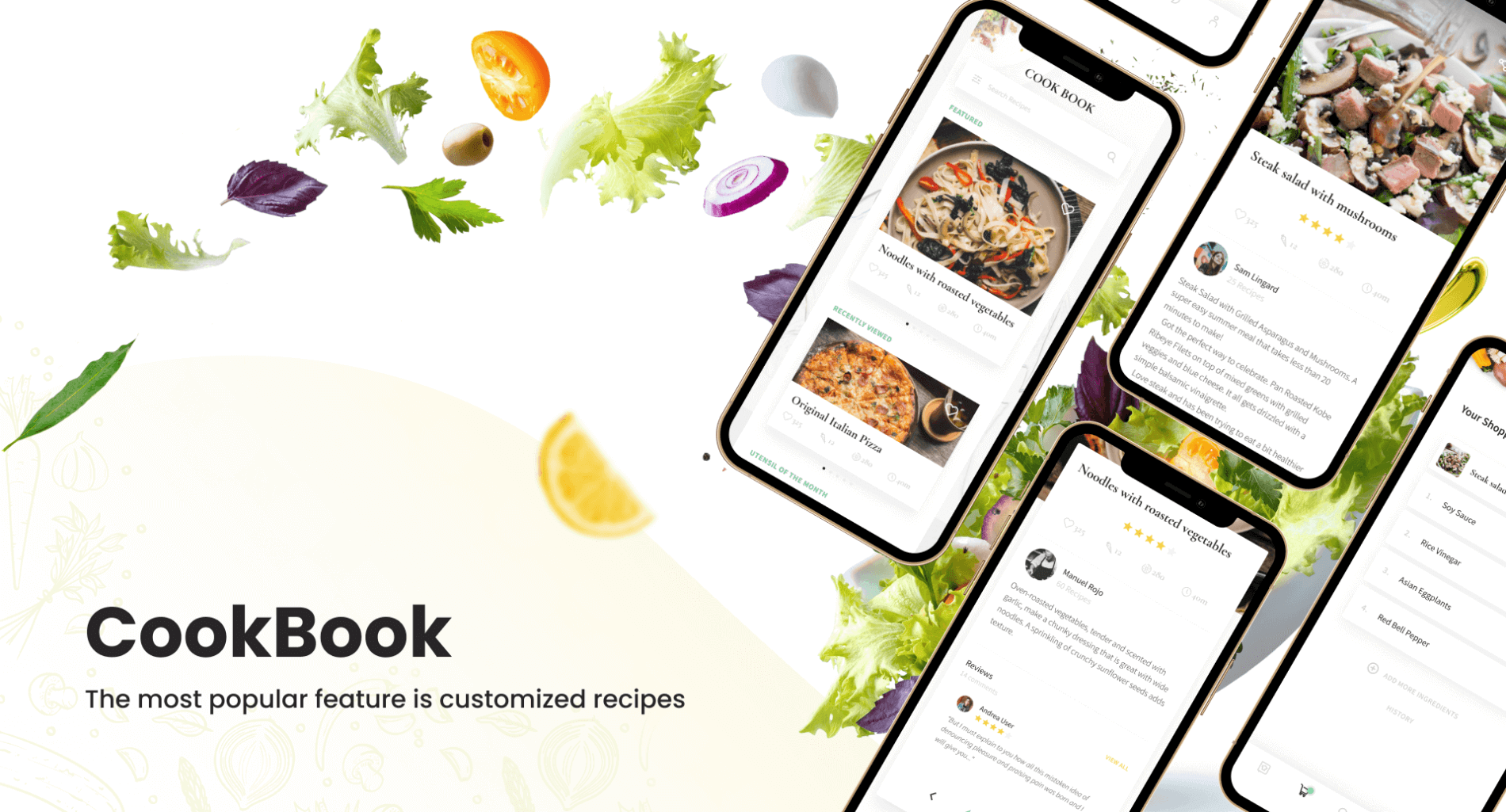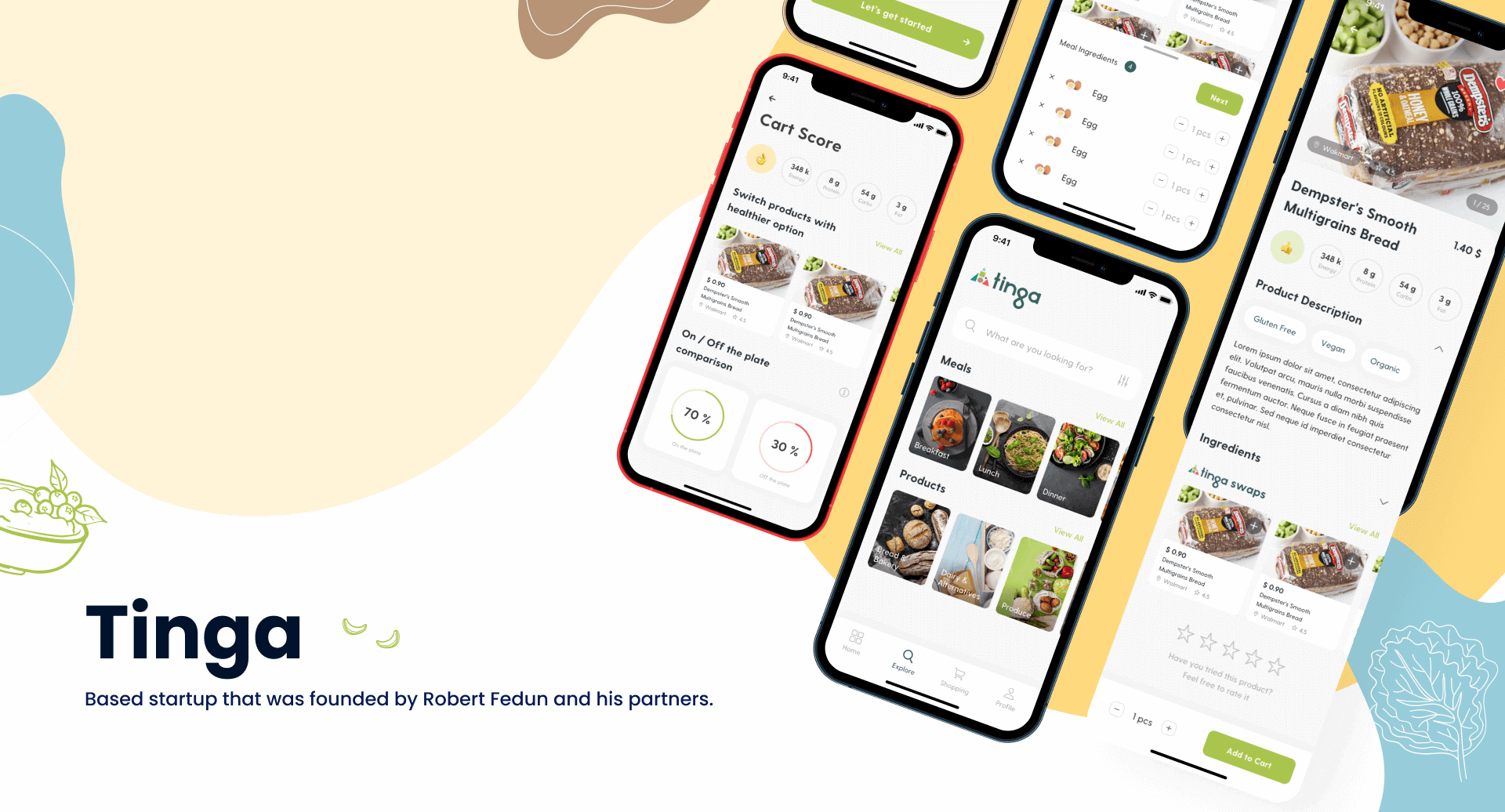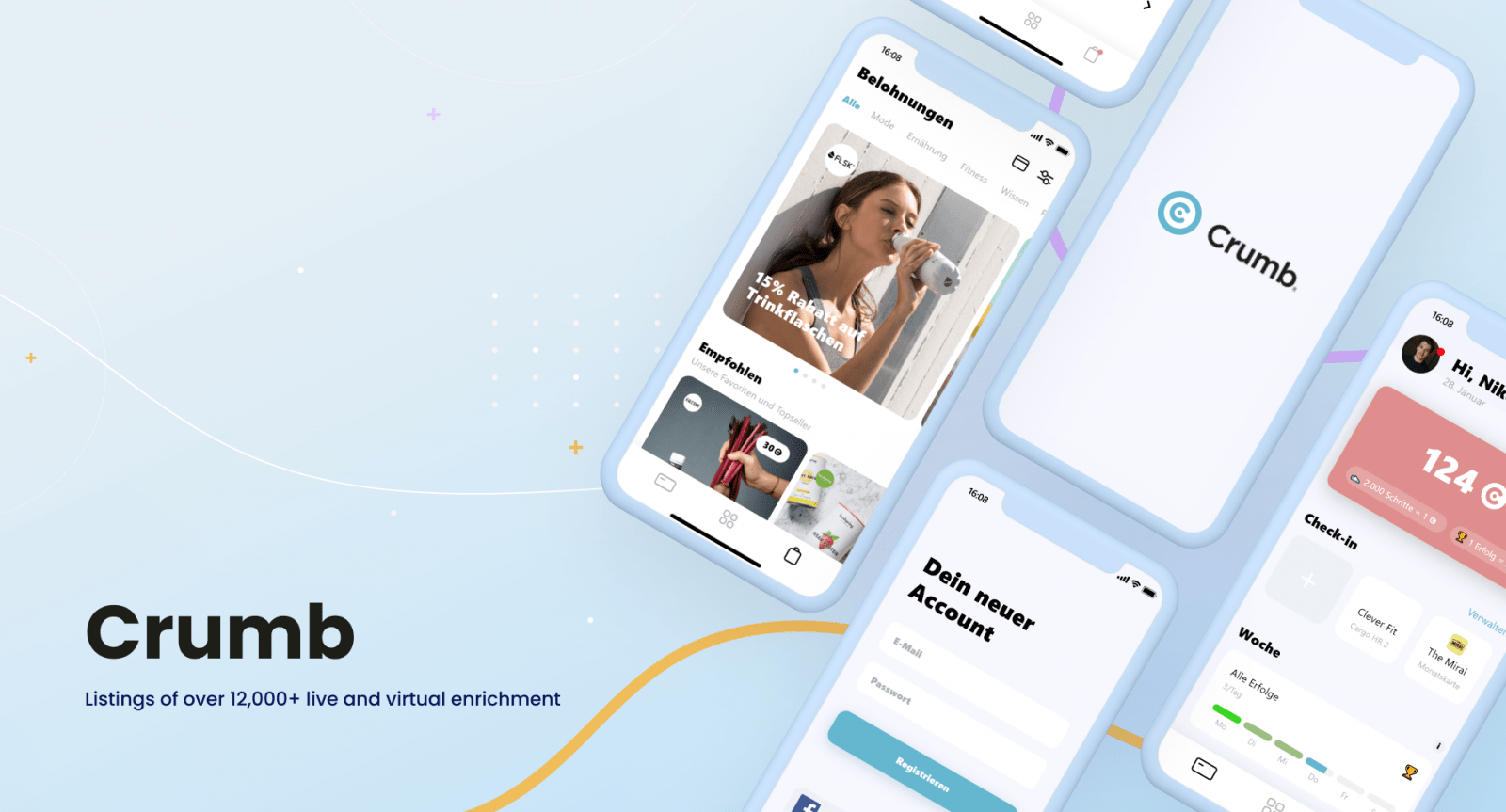Everyone has tried some kind of diet or nutrition app at least once in their life. This is because people have started to be more aware of their health and wellness, while diet trends are growing every day. As a result, developers create many applications and services designed to help people manage their diet, explore new recipes, find new exercises, and so on.
Technology advancements significantly eased modern people’s lives, so they can make everything from ordering food to shopping right from their homes. An increase in the amount of fast food, high prices on healthy food, and digital products resulted in global obesity and obesity-related fatal diseases.
Therefore, you won’t be surprised that all kinds of diet and nutrition software are in high demand today. Since the development of a diet and nutrition tracking app is a challenging business that requires spending finances, time, resources, and knowledge, we crafted this guide to help you learn about nutrition app development and how to make the product profitable for you.

What Are Diet and Nutrition Apps?
No diet or nutrition app will cook dinner or exercise for its owner. However, these applications may help remind and motivate users to manage their diet, explore new exercises, improve overall wellness, lose weight, and so on. While these apps can deliver various purposes, they all have the basic functionality focusing on motivating people to live healthier lives.
Helping users create a healthy diet and providing information on improving overall wellbeing, these applications can also allow users to track what they eat to help them better understand their eating habits. According to the food type, daily activity, habits, and other factors, these applications can suggest specific menu or lifestyle changes to achieve a certain goal.
Since more and more people understand that healthy eating is the key to happy lives, the market for diet and nutrition applications is growing rapidly. Based on SensorTower’s latest survey report, user spending on the fitness and health industry in Europe only grew 70.2% year-on-year in 2020 to an estimated $544.2 million. In addition, the app sector related to calorie counters, food diaries, and apps for tracking fitness achievements is suggested to grow from $3552 million in 2020 to $5273 million in 2024.
Types of Diet and Nutrition Apps
-
Calorie Counter Apps
These mobile solutions are mainly focused on allowing users to count their calorie intake by inputting food in grams and types. Besides the main feature of the app, this software may also provide additional insights into the nutrient quality of various foods by analyzing ingredients and providing suggestions on diet improvement based on goals.
-
Recipe Apps
Recipe applications allow users to choose the best meals based on their food preferences, unique dietary needs, and health and fitness goals. The main goal of this software is to help users learn how to maintain a healthy diet and how to cook better meals to achieve weight loss or gain muscles.
-
Niche Diet Tracking Apps
People who have a specific diary or taste needs are those who can benefit from a diet tracking mobile application. This means if the user is vegan, lactose-intolerant, suffers from diabetes, or pregnant – they can create their meals based on specific requirements with the help of the application.
-
Fitness Apps
Most diet and nutrition apps rely on psychical activity to identify what meals to suggest and what calorie intake the user needs. This is because a healthy diet involves not only calories consumed but spent too. In addition, psychical activity can determine how long the user needs to wait to achieve specific goals.

How Do Diet and Nutrition Apps Make Money?
Diet and nutritional applications usually make money through the most basic models like any other app. These include:
1. In-app Advertising
In-app advertising works by showing ads in a designated space in the interface. As an app owner, you will get paid for display ads according to the number of shows or clicks. This is the most effective model for those apps that are frequently used.
2. Paid Features
This can be realized through two options – in-app purchases and extra features. In-app purchases allow consumers to buy products or bonuses you offer. You can also sell extra features, like a smart calorie intake calculator or video exercises with a fitness trainer.
3. Paid Subscriptions
Paid subscriptions gained popularity only in recent years, and they are now one of the most popular monetization techniques. Users will be required to pay for access to the application before downloading it. Experts believe that this monetization method will be the most profitable in 2022.
4. The Freemium Model
One of the best ways is the freemium model. It is also the easiest one. It gives users free access to basic functionality, but they will need to pay to use the entire functionality of the application.
Must-Have Features of Nutrition and Diet Apps
-
The Registration Page
When you wonder how to make a nutrition app, the first thing is creating a registration page. This page allows users to create their accounts, keeping their information safe and in one place. This information may include age, gender, height, weight and eating habits, etc. You should allow users to add the following information: alcohol consumption, food allergies, desired goals, and so on.
-
Diet Suggestion
Since diet and nutrition applications are focused on educating people about healthy diets, diet suggestion is the core of the software. This feature will help you boost users’ health and fitness levels. You should also ensure that suggestions provided by the product are designed based on the right eating habits with a spectrum of options to choose from.
-
Connectivity with Wearable Devices
Modern customers don’t want to struggle with connecting something manually. They want a quick and efficient way to manage their wellness and healthy diet. Therefore, wearables like Apple Watch, Android Wear, or Fitbit are a must-have now. So you need to build an application that can be easily connected with third-party devices and enables opportunities such as monitoring heart rate and distance by walking, cycling, swimming, running, and so on.
-
Engaging Statistics
Since these applications are designed to motivate people to have a healthy lifestyle, you need to consider adding engaging statistics. You can allow your users to monitor their goals, see how far they have gone, what the next goal is, and so on. This will help them to achieve their goals while also boosting retention rates for your revenue.
-
Push Notifications
Push notification is a classic for any application and any owner who wants to keep users engaged in the long term. It is an excellent tool to notify users about any changes, payment success, details about their fitness goals, new meal suggestions, etc. YOu can also add a virtual assistant, making this app more efficient.
-
Live Chat with Expert Dietitians
Modern people like to chat to get more suggestions rather than do it on their own. So you can add live chat with a diet expert or nutritionist for an extra payment, making it easier for them to manage their wellness and lifestyle.
Special Tools For Nutrition and Diet App Development
Diet and nutritional applications are specific ones, so they require connections with unique tools if you want to achieve results in the competitive market. These are things to consider when starting diet and nutrition app development:
HealthKit and Google Kit
These two tools are commonly used by companies developing any kind of health, fitness, or diet application since they offer lots of convenient features and connections related to user health data. By implementing these tools, you will be able to use the following things during the app development:
- Gaining and storing health data;
- Data analysis and visualization;
- Enables social interactions.
Apple Watch and Android Wear
Both Apple’s and Google’s wearable devices have been specially designed to help users easily monitor their psychical activity with no need to input information manually. Therefore, these tools can help users to input information like amount of steps, track psychical activity, calories burned, and so on.
Recipe Search and Diet API
Both of these tools allow developers to search for a large database. In addition, users will also have a chance to use automated nutritional analysis for better suggestions and higher satisfaction with the recipe provided by the software.

How to Build a Diet and Nutrition App: Stages of Mobile App Development
-
1 STEP 1: Create a Prototype
The most effective way to develop a diet and nutritional app is to start with the prototyping stage. This prototype will work as a click-through version of your final product that only represents the design, so no coding is required.
-
2 STEP 2: Design
Once the prototype is designed and you get feedback from your team, you are ready to start the entire design. The visual part of the application is essential, as users want to see the engaging yet simple design of the app they use on a daily basis. Therefore, make sure you hire an experienced team of designers who have already worked in this industry.
-
3 STEP 3: Development
The development part is the core of the app. The first thing is to hire top-notch developers who have relevant experience. This stage is made up of the following parts:
- Front-end Development
This part will be done based on the design, and developers will later need to connect this part with the back-end part.
- Back-end Development
The back-end part should always include an admin portal where you can manage the app’s content. Some of the things you need to consider are:
- user management (block/unblock offensive content)
- articles and educational content
- Notifications management
- Integrations
As we mentioned, the integration of diet and nutrition apps is vital if you want to achieve success. Pulling information from connected devices and various activity trackers helps customers get higher satisfaction from the app. You can consider adding the following:
- HealthKit (iOS), Google Fit (Android), and Samsung Health
- Siri shortcuts or Google Assistant integrations for quick data input
- Widgets for displaying critical information
HIPAA Compliance
HIPAA compliance is essential for the healthcare industry. However, you don’t need to worry about this guideline if you build a diet and nutritional app as long as your app does not track users’ essential bodily functions like heart rate, oxygen level, etc.
-
4 STEP 4: Testing
Testing is essential for any diet and nutrition application. If you want to avoid costly mistakes and reduce the time needed for maintenance and improving user feedback, make sure your app is free from bugs before it is launched.
-
5 STEP 5: Release and Maintenance
Finally, the most exciting part is releasing your app to the App Store and Google Play. However, you will still need to check user feedback and make changes if they are not satisfied with the product. Once you fix all issues, you will also need to maintain and update the app in a timeline so you can compete with other apps while new trends appear.
How Much Does it Cost to Build a Diet app?
The cost will hugely depend on the app’s features, the type of company you hire, the app’s complexity, the location of the developers, and many other factors. However, we can say that an MDP (minimum delightful product) version of a nutrition and diet application may cost you around $46,000, while a fully-featured app will round up at $100,000.
If you’re reading these lines, you’re probably interested in development of healthcare apps of any kind and complexity. Get in touch with our experts to get to know how much does it cost to create a fitness app, telemedicine solutions, cannabis products.
Interexy’s Experience in Nutrition App Development
A Canada-based startup Tinga partnered with Interexy to develop a mobile app that helps users make informed food choices. The app allows users to scan grocery items for nutritional information, apply filters to avoid allergens or find plant-based options, and access curated recipes from platforms like Allrecipes and BBC Good Food.
One of the biggest challenges was integrating extensive product databases from major retailers and third-party recipe sources, which our team successfully tackled. Using React Native for the front end and PHP for the backend, we built an intuitive, data-rich platform that empowers users to eat smarter.

Book a Free Consultation for Developing Your Diet and Nutrition App with Interexy
Interexy is a professional development and consulting agency specializing in health, blockchain, wellness, and NFT industries. Thanks to our expertise and in-depth knowledge of healthcare app development, we always know how to deliver high-quality and engaging products within the required timelines.
Check our fitness app development services to find out how we develop such applications, what guidelines we follow, what tech stack we use to guarantee results, and what our clients think about our development!
Final Thoughts
Diet and nutrition are a hot topic in 2022. This is because digital transformation has made it possible for modern people to perform basically any task while sitting on their coach, which has caused many health issues related to obesity. Therefore, many applications have been developed to help users maintain a healthier life and diet. If you have any questions about the development process or want to discuss your idea, book a free call with our experts!
FAQs on Diet and Nutrition Tracking App Development
-
How big is the nutrition app market?
The global nutrition app development market is rapidly growing, driven by increasing health awareness and demand for digital health solutions. With a projected value of over $7 billion by 2030, the market is growing at a CAGR of 11-15%. Currently, millions of users worldwide rely on diet and nutrition tracking app development solutions to monitor their food intake, track macros, and achieve fitness goals. With over 50 million downloads of popular nutrition apps and increasing demand for personalized health solutions, investing in diet and nutrition app development presents a lucrative opportunity for businesses.
-
How to make a nutrition tracking app?
To make a nutrition app, start by defining your target audience and the app’s core features, such as meal tracking, calorie counting, and integration with wearable devices. Choose the right tech stack and ensure a seamless user experience by following best practices in nutrition app development. Partnering with experts in diet and nutrition tracking app development will help ensure regulatory compliance and optimize the app for accuracy and usability.
-
How much does it cost to build a nutrition app?
The cost of diet and nutrition app development depends on factors such as app complexity, platform choice (iOS, Android, or both), and features like AI-driven recommendations or barcode scanning. A basic nutrition app development project can start at around $30,000–$50,000, while more advanced applications with custom features may exceed $100,000. Working with an experienced team specializing in how to create a diet app can help streamline development and reduce unnecessary expenses.






